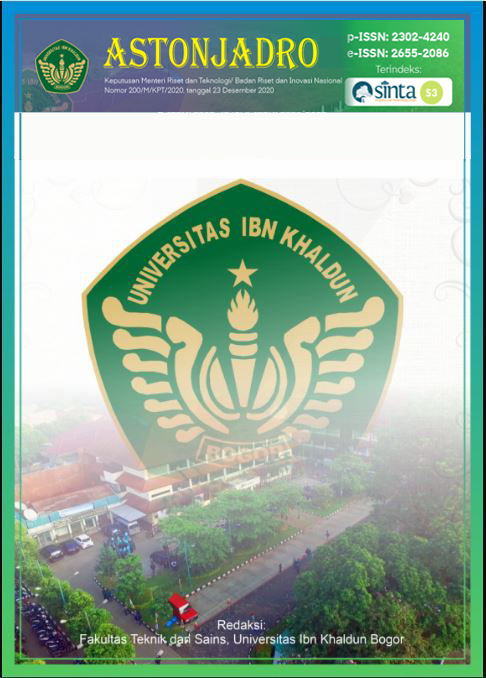Encouraging the Shift of Modes of Freight Transport from Road to Railways in Indonesia (Case Study: Java Island)
DOI:
https://doi.org/10.32832/astonjadro.v13i3.15684Keywords:
freight transport; environmental; policy; Analytic Hierarchy Process (AHP); Expert Choice Software.Abstract
Freight transportation has a positive effect on the development, on the other hand, transportation also has negative impacts that need to be considered. Rail as a mode that has the potential to be a solution is still little used compared to trucks. This research aims to investigate the weighting factors and actors in Indonesia to encourage the shift of freight transport modes from trucks to railways, to know the constrain the utilization of railways as a mode of freight transportation and provide policy recommendations by benchmarking from other countries. The research was carried out using qualitative and quantitative methodologies. A qualitative approach was carried out through a literature review covering various countries and sources, and interviews with experts. The analytic hierarchy process is formulated for quantitative analysis and executed with Expert Choice software. Data was collected through a questionnaire, with a purposive sampling method. The results show that Time, Service Quality and Area Coverage are considered as the 3 main factors with the highest weight. Government and Logistics Service Providers are the most influential actors in promoting the shift of freight from trucks to trains. Recommendations for priority policies are policies related to factors and involving actors with the greatest weight, and overcoming the obstacles that exist in Indonesia in using trains as a mode of freight transportation by increasing modal transfer facilities to increase the efficiency of freight transportation via train, with support from the government in the form of incentives as has been done by the Britain Railway.
References
Dwiatmoko, H. 2018. Peran Transportasi Perkeretaapian: Dalam Pembangunan Nasional Melalui Analisis Input-Output. Kencana.
Etikan, I. 2016. Comparison of Convenience Sampling and Purposive Sampling. American Journal of Theoretical and Applied Statistics. 5(1), p.1.
Forkenbrock, D.J. 1999. External costs of intercity truck freight transportation. Transportation Research Part A: Policy and Practice. 33(7–8), pp.505–526.
Guarte, J.M. and Barrios, E.B. 2006. Estimation Under Purposive Sampling. Communications in Statistics - Simulation and Computation. 35(2), pp.277–284.
Inkinen, T. and Hämäläinen, E. 2020. Reviewing Truck Logistics: Solutions for Achieving Low Emission Road Freight Transport. Sustainability. 12(17), p.6714.
Islam, D.M.Z., Ricci, S. and Nelldal, B.-L. 2016. How to make modal shift from road to rail possible in the European transport market, as aspired to in the EU Transport White Paper 2011. European Transport Research Review. 8(3), p.18.
Mayeres, I. 2003. Taxes and Transport Externalites. Public Finance and Management. 1.
Nasreen, S., Saidi, S. and Ozturk, I. 2018. Assessing links between energy consumption, freight transport, and economic growth: evidence from dynamic simultaneous equation models. Environmental Science and Pollution Research. 25(17), pp.16825–16841.
Parikesit, D. 2016. DAYA SAING ANGKUTAN BARANG INTERMODA DALAM PERSPEKTIF KEBIJAKAN PEMERINTAH. Jurnal HPJI (Himpunan Pengembangan Jalan Indonesia). 2(2).
Pinto, J.T. de M., Mistage, O., Bilotta, P. and Helmers, E. 2018. Road-rail intermodal freight transport as a strategy for climate change mitigation. Environmental Development. 25, pp.100–110.
Saaty, T.L. 1990. How to make a decision: the analytic hierarchy process. European journal of operational research. 48(1), pp.9–26.
Susan Natalia Sihombing, S.N.S., Sam Deli Imanuel, S.D.I. and Agus Sembodo, A.S. 2021. Analisis pemilihan moda antara truk petikemas dan kereta api petikemas di kawasan industri jababeka. ANALISIS PEMILIHAN MODA ANTARA TRUK PETIKEMAS DAN KERETA API PETIKEMAS DI KAWASAN INDUSTRI JABABEKA. 1(1), pp.1–10.
Teknomo Kardi 2006. ANALYTIC HIERARCHY PROCESS (AHP) TUTORIAL 4th ed. Revoledu.com.
Translation, E. and Hutchinson, I. 2005. Efficient train systems for freight transport.
Woodburn, A. 2007a. Appropriate indicators of rail freight activity and market share: A review of UK practice and recommendations for change. Transport Policy. 14(1), pp.59–69.
Woodburn, A. 2007b. Evaluation of rail freight facilities grant funding in Britain. Transport Reviews. 27(3), pp.311–326.
Downloads
Published
How to Cite
Issue
Section
License
Copyright (c) 2024 ASTONJADRO

This work is licensed under a Creative Commons Attribution-ShareAlike 4.0 International License.
Paper submitted to ASTONJADRO is the sole property of the Astonjadro Journal. Unless the author withdraws the paper because he does not want to be published in this journal. The publication rights are in the journal Astonjadro.ASTONJADRO
LICENSE
This work is licensed under a Creative Commons Attribution-ShareAlike 4.0 International License.
Based on a work at http://ejournal.uika-bogor.ac.id/index.php/ASTONJADRO













